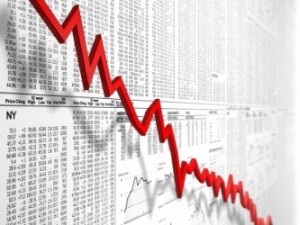 Obama has spread the wealth, but the poor and middle class haven’t benefited.
Obama has spread the wealth, but the poor and middle class haven’t benefited.
Editorial Board • Wall Street Journal
One reading of the midterm election wave is that voters have concluded that President Obama ’s answer to falling incomes and slow growth—higher taxes on the rich and more redistribution—is tapped out. These policies have been up and running for six long years but the middle class is no better off as a result.
On taxes, Mr. Obama often claims that the rich don’t pay their “fair share,” yet the most affluent one-fifth of taxpayers on average supplied 68.7% of federal revenue for 2011. That’s according to the Congressional Budget Office, which last week updated its statistics on the U.S. distribution of income and taxes for 2011 and preliminary calculations for last year.
As for the top 1%, they funded 24% of everything the government does in 2011. The CBO also estimates that the end-of-2012 fiscal cliff deal that lifted the top marginal income tax rate to 39.6%, plus ObamaCare’s taxes on high-income individuals, increased their average federal taxes by 4.3 percentage points to 33.3% of income. The Warren Buffett minimum-tax rule asserted that no millionaire should pay an effective tax below 30%. Mission accomplished.
This has long been the reality of the highly progressive U.S. tax system, but the bigger news in the CBO numbers is that wealth is being spread with little to show for it. According to the CBO, the lowest 60% of earners all collect more in benefits on average than they remit to the Treasury. Yet even the supposed beneficiaries of Mr. Obama’s policies ended up with less in 2011 than 2007.
The budgeteers break out these data by income quintiles and begin with what they call “market income”—wages and salaries, employer-provided retirement and health benefits, the business side of payroll taxes and investment returns. They then add federal and state programs that make cash transfers or offer in-kind benefits, and subtract all tax payments including payroll levies and the individual share of the incidence of the corporate tax. This “after-tax” measure is a kind of progress report on government ministrations.
The middle quintile—the narrowest definition of the middle class—were households with market income between $49,800 and $83,300 on average. In 2011, they paid about $7,400 in taxes and received $16,500 in transfers, for an average after-tax income of $59,000.
That implies an effective tax rate of minus-13.7%. The comparable rates for the lowest and second-lowest quintiles were minus-35% and minus-27.6%, respectively. Only the fourth quintile (0.7%) and the highest quintile (18.9%) are net tax contributors.
For the middle class in 2011—two years after the recession ended—transfers rose 25.9% over 2007 and tax payments fell by 24.4%. Yet after-tax income nonetheless fell by 1.9% over the same period. The bottom 40% experienced similar shifts, with the same outcomes. Though mobility is still dynamic as people move among the quintiles year over year, these average trends don’t augur well for either individuals or the larger economy.
Liberals will respond that at least redistribution reduced after-tax income inequality, though that abstract achievement is little comfort to the people with less actual income at their disposal. Recall Mr. Obama’s comments as a primary candidate at a 2008 debate that he favored higher taxes in the name of equity, never mind the consequences for revenue or the economy. Well, he got that—and he might have added never mind the people his fairness was supposed to help.
The CBO observes in a footnote that, “Taxes and transfers can affect households’ market income by changing incentives for people to change their behavior. If an additional dollar earned or saved leads to reductions in transfers or increases in taxes, then the after-tax return from working and saving is reduced, which may cause people to work or save less.” The CBO did not attempt to model these behavioral effects, but they can’t be good for upward mobility.
The main lesson in these statistics is not about dependence on government. Rather, it is a verdict on Obamanomics. Presidents who put reducing inequality above increasing prosperity end up with less growth and opportunity that benefits everyone, and thus with more inequality.
There’s also a lesson about the exhaustion of the liberal tax agenda. As a matter of arithmetic in a tax system as tilted toward the high end as America’s, the rich aren’t nearly rich enough to finance progressive ambitions. If Hillary Clinton wants more redistribution, she’ll inevitably have to tee up everybody between the 21st to 80th income percentiles for a European-style value-added tax, carbon tax or some other revenue maker.
Our guess is that most Americans would prefer to exit this tax-and-redistribute treadmill and simply earn more market income.